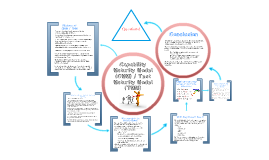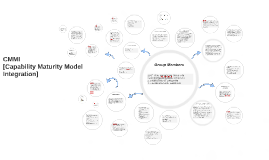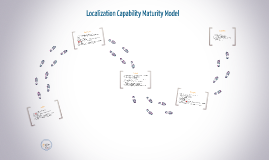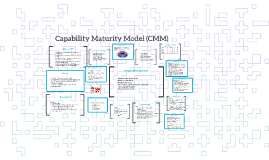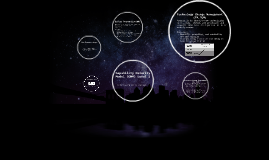CMMI [Capability Maturity Model Integration]
Transcript: -Ensure that selected work products meet their specified requirements. -Verification preparation, verification performance, and identification of corrective action. SP 3.1 Perform Verification -Promotes early detection of problems and can result in the early removal of defects. Example Work Products 1. Verification results 2. Verification reports 3. Demonstrations 4. As-run procedures log -includes the selection, inspection, testing, analysis, and demonstration. -Methods - inspections, peer reviews, audits, walkthroughs, analyzes, architecture evaluations, simulations, testing, and demonstrations. • Refer to the Measurement and Analysis process area for more information about obtaining measurement data and analysing measurement data. Example Work Products 1. Peer review data 2. Peer review action items Group Members Subpractices 1. Perform the assigned roles in the peer review. 2. Identify and document defects and other issues in the work product. 3. Record results of the peer review, including action items. 4. Collect peer review data. 5. Identify action items and communicate issues to relevant stakeholders. 6. Conduct an additional peer review if needed. 7. Ensure that the exit criteria for the peer review are satisfied. Preparation activities for peer reviews:- • identifying the staff to be invited to participate in the peer review of each work product • identifying key reviewers who should participate in the peer review • preparing and updating materials to be used during peer reviews Example Work Products 1. Peer review schedule 2. Peer review checklist 3. Entry and exit criteria for work products 4. Criteria for requiring another peer review 5. Peer review training material 6. Selected work products to be reviewed -Can be acquired, developed, reused, modified, or obtained using a combination of these activities. -Type of environment required depends on the work products Example Work Products 1. Verification environment -Examples of sources for verification criteria (Standards, Organizational policies, Test type, Test parameters, Type of work products, Suppliers Proposals and agreements) Example Work Products 1. Verification procedures 2. Verification criteria Subpractices 1. Generate a set of comprehensive, integrated verification procedures for work products and commercial off-the-shelf products, as necessary. 2. Develop and refine verification criteria as necessary. 3. Identify the expected results, tolerances allowed, and other criteria for satisfying the requirements. 4. Identify equipment and environmental components needed to support verification. • purposes of conducting a peer review is to find and remove defects early • performed incrementally as work products are being developed • Peer reviews can be performed:- key work products of specification, design, test,implementation activities and specific planning work products • The focus should be on the work product in review, not on the person who produced it • Peer reviews should address the following guidelines:- there should be sufficient preparation the conduct should be managed and controlled consistent and sufficient data should be recorded action items should be recorded 2. PROCESS AREA COMPONENT I. Core Process Areas and CMMI Models All CMMI are produced from CMMI Framework 16 core process areas cover basic concepts (For example: Development, service) II. Required, Expected, and Informative Components Required – • components that are essential to achieving process improvement in a given process area • specific and generic goals Expected - • components that describe the activities that are important in achieving a required CMMI component • specific and generic practices Informative Components- • components that help model users understand CMMI required and expected components • informative material plays a key role in understanding the model SG 2 Perform Peer Reviews SG 3 Verify Selected Work Products CMMI [Capability Maturity Model Integration] 6. Develop a detailed peer review schedule, including the dates for peer review training and for when materials for peer reviews will be available. 7. Ensure that the work product satisfies the peer review entry criteria prior to distribution. 8. Distribute the work product to be reviewed and related information to participants early enough to enable them to adequately prepare for the peer review. 9. Assign roles for the peer review. 10. Prepare for the peer review by reviewing the work product prior to conducting the peer review. Subpractices 1. Record data related to the preparation, conduct, and results of the peer reviews. 2. Store the data for future reference and analysis. 3. Protect the data to ensure that peer review data are not used inappropriately. 4. Analyze the peer review data Subpractices 1. Identify work products for verification. 2. Identify requirements to be satisfied by each selected work product. 3. Identify verification methods available for use. 4.






